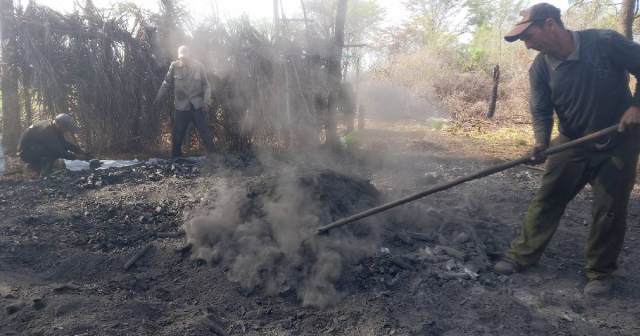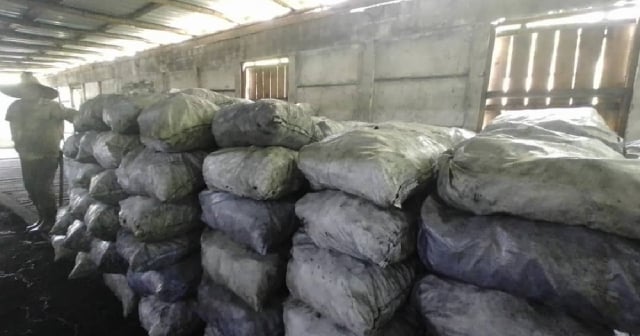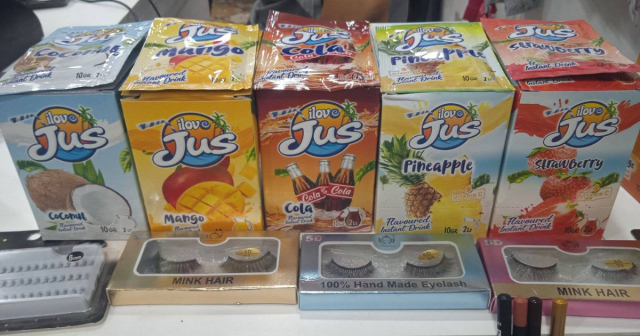
During the three days of general blackout in Cuba, one of the problems that hits Cubans the hardest is the loss of food, due to the heat in the country and the lack of refrigeration for products, especially meat and dairy.
One of the recurring comments on social media is that life in Cuba is like in the times of the Taínos, but the truth is that the current Cuban is less prepared to survive without electricity than during the colonial era, when various techniques were used for food preservation without refrigeration.
Electricity arrived in Cuba in the 19th century, but until the mid-20th century, many of these techniques were used in the countryside to preserve food in order to prevent its spoilage.
These are some of the most used in the world, although if you are in Cuba you probably won't be able to use them to preserve your food during these days of general blackouts, because you need salt, vinegar, and lard, three things that are difficult to obtain in the country.
1. Salting
Salting is an ancient technique that involves covering foods, especially meats and fish, with salt. Salt dehydrates the food by drawing out moisture, inhibiting the growth of bacteria and fungi that require humidity to proliferate.
Uses: It was commonly used with meats (pork, lamb) and fish (cod, sardine).
Historical examples: "Salted cod" is a classic, widely used in Europe and Latin America.
2. Smoked
Smoking involves exposing food to wood smoke for an extended period, which not only gives it flavor but also dehydrates and sterilizes the surface, creating a protective barrier against bacteria.
Uses: It was used with meats, fish, and sausages. Foods such as hams, sausages, and fish were hung in smokehouses or in chimneys.
Historical examples: Serrano ham in Spain and smoked salmon in Nordic cultures.
3. Drying or Dehydration
This technique took advantage of exposure to the sun and wind to remove water from food. By dehydrating, the food could last a long time without spoiling.
Uses: Meat (dried meat or jerky in Latin America), fruits (figs, grapes that became raisins), and vegetables.
Historical examples: In dry regions like the Middle East and the Mediterranean, sun drying was a crucial technique for preserving foods such as fruits and fish.
4. Preservation in Fat (Confit)
In this technique, the meat was slowly cooked in fat (such as lard or oil) at low temperature. It was stored submerged in that fat, creating an oxygen-free environment and thus preventing the proliferation of bacteria.
Uses: Common with meats such as duck or pork, in French cuisine and in other European rural cultures.
Historical examples: The "confit de canard" in France or the "matanza" in Spanish rural culture, where pork was preserved in lard, as in the fields of Cuba.
5. Pickled Foods and Vinegar Preservation
The food was immersed in an acidic solution, such as vinegar, which prevented the growth of bacteria. This method was widely used to preserve vegetables as well as meats.
Uses: Vegetables (cucumbers, onions, carrots) and some types of meats.
Historical examples: Pickling was very popular in Mediterranean cuisine, where meat and fish were preserved in vinegar, along with spices.
6. Fermentation
Controlled fermentation is a process in which bacteria or yeasts break down the sugars in food, producing acids, gases, or alcohols that preserve the food. This not only extends the shelf life of the food but often enhances its flavor.
Uses: It was used for vegetable preserves (such as sauerkraut or fermented cabbage), dairy products (yogurt, cheese), and meats (fermented sausages and chorizos).
Historical examples: The fermentation of cabbage into sauerkraut in Germany or kimchi in Korea are classics.
7. Conservation in Honey
Honey, thanks to its high concentration of sugars and antibacterial properties, was used as a means to preserve food. By immersing meats, fruits, or herbs in honey, they were preserved for months or even years.
Uses: It was common to preserve fruits like figs or quinces, as well as some meats.
Historical examples: Remains of honey with food inside have been found in Egyptian tombs, preserved for over 3,000 years.
8. Burial in Cold Wells
In cold regions, food was buried in deep pits where the soil temperature remained low. This technique made use of the natural coolness of the earth to prevent decomposition.
Uses: Foods like roots, tubers, and some meats were buried to preserve them for months.
Historical examples: This technique was used in Russia and Scandinavia to preserve meat during the long winters.
9. Brine
They submerged food in a mixture of water and salt (brine). This created an environment that prevented the growth of bacteria. This technique was particularly useful for preserving meat and fish.
Uses: Preservation of meats, fish, and some vegetables.
Historical examples: Pickled herring in the cultures of Northern Europe.
10. Conservation in Alcohol
Soaking foods in alcohol such as brandy, wine, or aguardiente prevented them from spoiling. Alcohol is a natural antibacterial agent and helped preserve fruits or meats.
Uses: It was used to preserve fruits like cherries and peaches, and sometimes meat.
Historical examples: Fruits in liqueur, a common tradition in several regions of Europe.
These techniques were essential for survival, especially in times before refrigeration, and many of them are still used today, both out of tradition and for the unique flavors they provide.
In Cuba, these techniques have not been used for decades. Currently, they do not form part of the culinary culture, have disappeared from popular wisdom, few people apply them in their homes, and those who know them often do not have the resources to put them into practice.
What do you think?
COMMENTFiled under:






